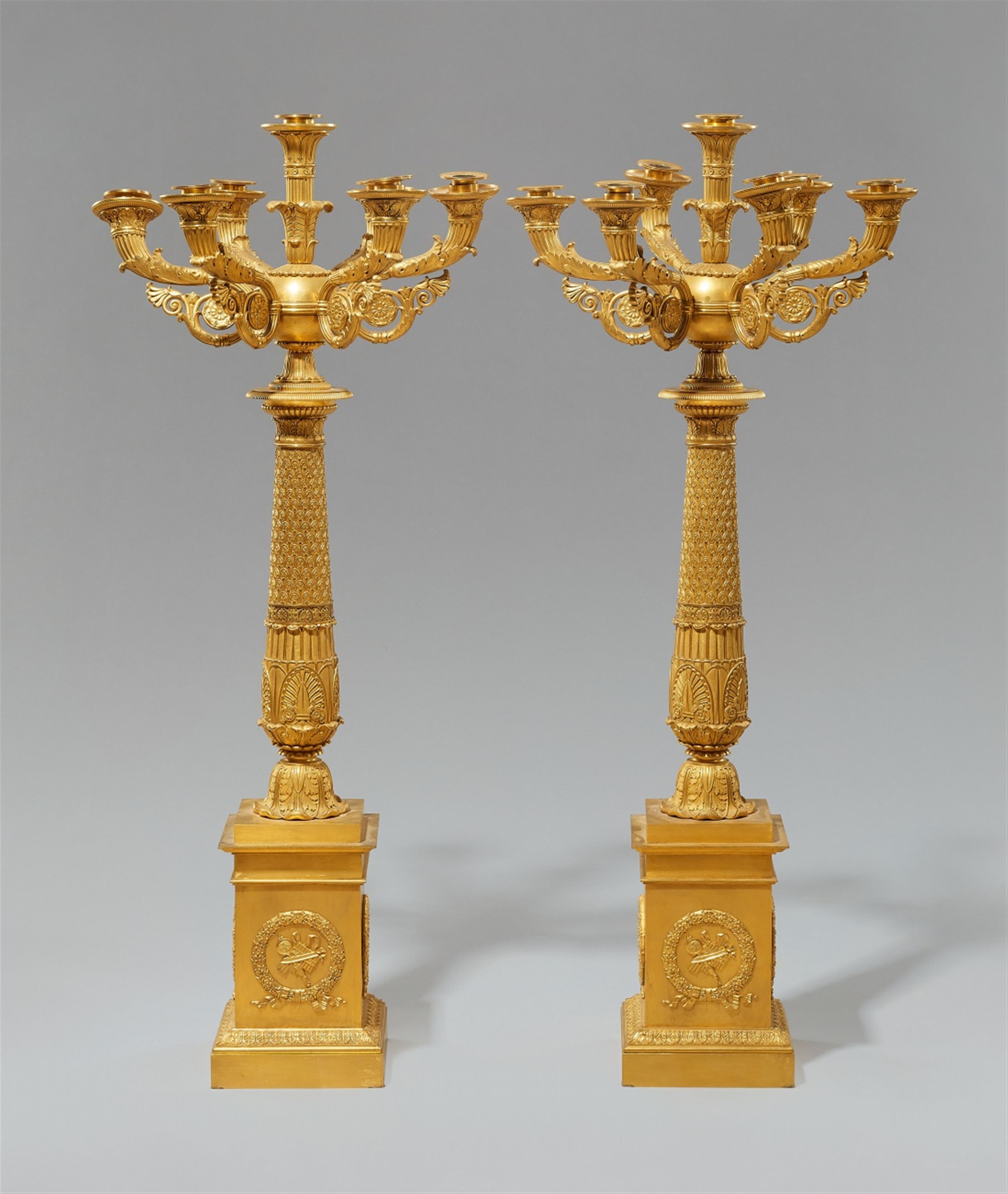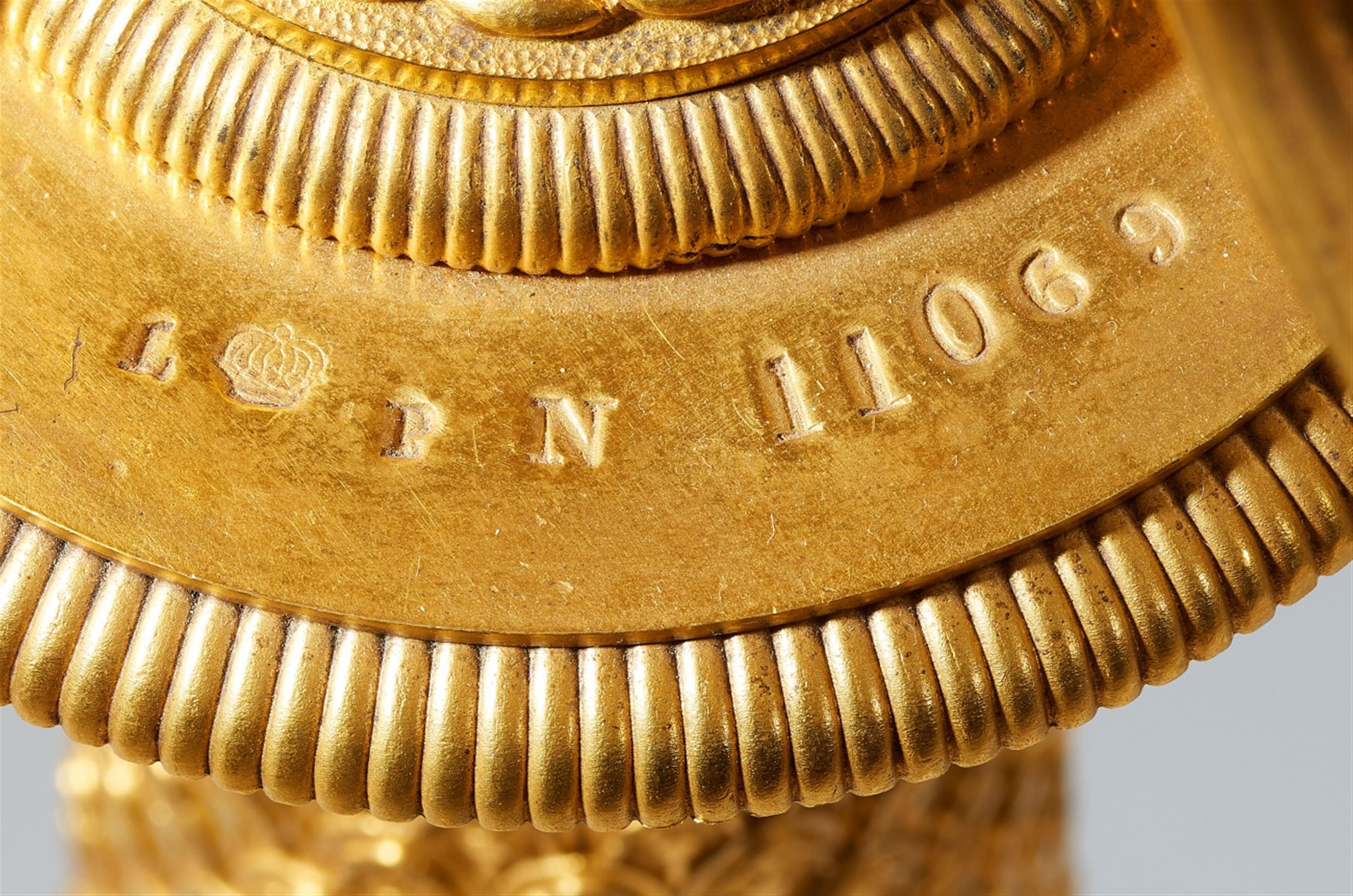A pair of Empire table candelabra from the Château de Neuilly
Ormolu candelabra made from several separately cast pieces. Seven-flame Neoclassical candelabra of architectural design. Tall plinths with trophies in wreaths applied to all four faces supporting tapering columns, curved branches formed as cornucopias and a further central branch issuing from a globe. With finely chased matte and polished acanthus, palmette, and lotus flower décor in bas relief. With stamped inventory number LPN with a crown, 11068 and 11069. Gestempelte Inventarnummer LPN mit Krone 11068 und 11069. H 93.5, D 39.5 cm.
Paris, attributed to Pierre-Philippe Thomire, around 1810 – 20.
Pierre Philippe Thomire (1751 - 1843) learnt his trade from the famous Parisian bronze caster and exceptional ciseleur-doreur Pierre Gouthière. Thomire received his first royal commissions in the 1780s but rose to fame under Napoleon, who provided him with ample work. Among many other orders, he completed the famous cradle made for the King of Rome which is today housed in the treasury of the Kunsthistorisches Museum in Vienna (inv. no. WS XIV 28).
Neuilly palace belonged to the Marquis de Nointel in 1648 but was redesigned by the architect Cartaud for the chancellor d´Argenson in 1751. Following the chancellor's death, the palace passed into the ownership of Madame de Montesson, the morganatic wife of Louis-Philippe le Gros, Duke of Orléans (1725 - 1785). The duke was the grandfather of the later King Louis-Philippe. In 1804 the palace was purchased by Murat, who already owned the neighbouring palace of Villiers. When he was named King of Naples, ownership of the palace was returned to the crown. Napoleon gifted the palace to his sister Pauline, although she was never to live there. In 1817, Louis-Philippe, then Duke of Orléans, exchanged the two palaces for stables in Chartres that belonged to him and in which the king's horses had been stabled since 1801. He enlarged the palace grounds and arranged for the construction of several new buildings to house his many children and his sister Adelaïde.
The palace was partially burnt down and plundered during the Revolution in 1848 and in 1852 it was confiscated by Napoleon III as property of the House of Orléans. The park was divided up into 700 parcels of land, streets, and properties which were successively auctioned off. Only the wing of the palace reserved for Madame Adelaïde was allowed to remain, and experienced many changes in usage throughout the following decades.
Provenance
Private collection, Copenhagen.
Literature
Cf. similar relief ornaments on a dish signed by Thomire in: Ottomeyer/Pröschel, Vergoldete Bronzen, vol. I, Munich 1986, illus. 5.16.10.
Cf. a signed ensemble of three candlesticks in the Museum für Angewandte Kunst Cologne (cat. Ein Museum im Glück, Cologne 2013, p. 82 ff.)
For the wreath motifs, cf.: Alcouffe/Dion-Tenenbaum/Mabille, Les bronzes d´ameublement du Louvre, Dijon 2004, no. 138.
A pair of candlesticks with the same inventory stamp from the château de Neuilly from the collection of the Maréchal Berthier, Prince de Wagram, was sold by Sotheby´s Paris on 29th April 2014, lot 139.




